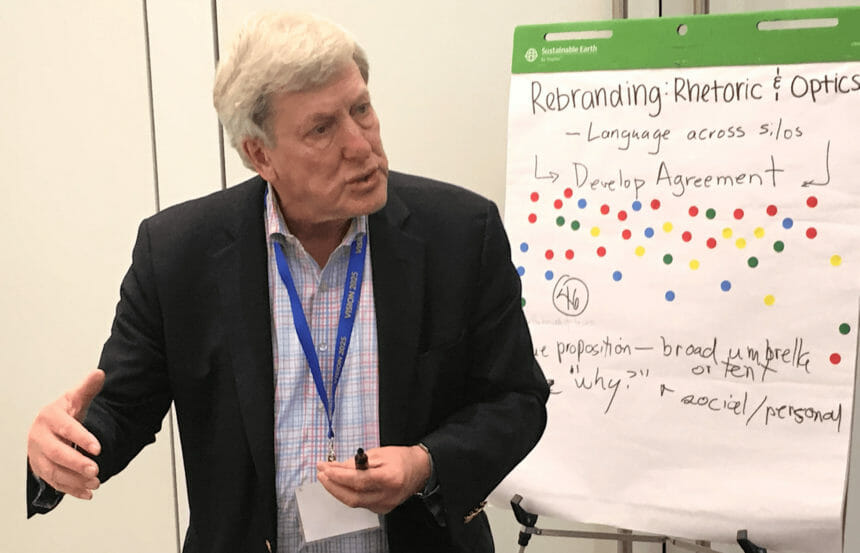Bob Kramer transitioned from CEO of the National Investment Center for Seniors Housing & Care in mid-2017, becoming senior adviser to the organization he had co-founded in 1991.
At the time, starting a new company wasn’t in his plans. In fact, he told McKnight’s Senior Living, it wasn’t even on his to-do list two months ago as NIC prepared for its annual Spring Conference, March 4 to 6.
But then COVID-19 happened.
Now Kramer has launched a new company, Nexus Insights, to provide organizations with new models for the provision of aging services. The new firm, with a stated goal of helping clients “rethink aging from every angle,” was announced Tuesday.
“What triggered this was what’s happened with the coronavirus and its impact on our sector, on aging services, on elders, on older adults,” he said. “It is what some would call a disruptive event.”
Such events, Kramer said, tend to spur innovation.
“We need to start to look at what life will be like post the coronavirus epidemic,” he said. “There will come a time when we’ll see the pandemic in the rear-view mirror. There will not come a time when we will return to the old normal.”
In addition to working with senior living, skilled nursing and other aging services providers, the new firm will aim to help companies in the technology, healthcare, consumer products and education industries, among others, meet the needs and aspirations of current and future older adults. The company will provide services for companies ranging from speakers, strategic planning and education.
“I’m going to continue to assist NIC part-time in that strategic adviser role, but Nexus Insights gives me an opportunity to look more broadly at the issues of how we view aging and how we view older adults,” Kramer said. “And then, secondly, to reimagine what aging services will look like. I’m excited about that, and I’m pretty passionate about it.”
What’s ahead for senior living
As for industry changes that COVID-19 will inspire, Kramer believes that senior living may return to highlighting its original value proposition of social connectedness, given that some prospective residents and their families now may view the home as a safer place to be, especially since technology has expanded the number of settings where care can be provided. “Care needs to be there, and it needs to be great, but if our value proposition is just care, there’s not a bright future for our sector,” he said.
Operators also may need to address a new, perhaps temporary, wariness of congregate settings, smaller living spaces and dense cities, Kramer said. And technology-related effects of communities’ response to social distancing and other safety restrictions undoubtedly will linger, he added.
“In my opening comments at the Spring Conference, I talked about how in the future, when it came to healthcare, consumers would demand, technology would enable, and payers would pay for bringing healthcare to people where they live, especially frail elders, rather than taking them to healthcare,” Kramer said. “Well, I never would have imagined the speed with which that became the norm.”
Now, he said, residents and their families will expect telehealth to be available all the time in senior living communities, because they know it is possible, they are comfortable with it, and they believe it poses less risk to older adults’ health and well-being.
“If you’re going to tell a resident’s family, in essence, ‘Well if something happens to Mom, we just call the paramedics and she goes to the ER,’ they’re going to go, ‘No, that’s not acceptable to us,’ ” he said. “And payers are not going to put up with sending somebody that they are holding the managed Medicare plan risk for to the ER every time there’s an issue at 2 in the morning.”
Residents and their families as well as staff members also have become accustomed to regular digital communication from community management and will expect it to continue after the pandemic has ended, Kramer said.
“If you’re not using digital communication to communicate consistently and to demonstrate real transparency to residents, to residents’ families, to staff and to the healthcare providers that are working with you and with your residents, and to healthcare payers, you won’t survive in the future,” he said.

